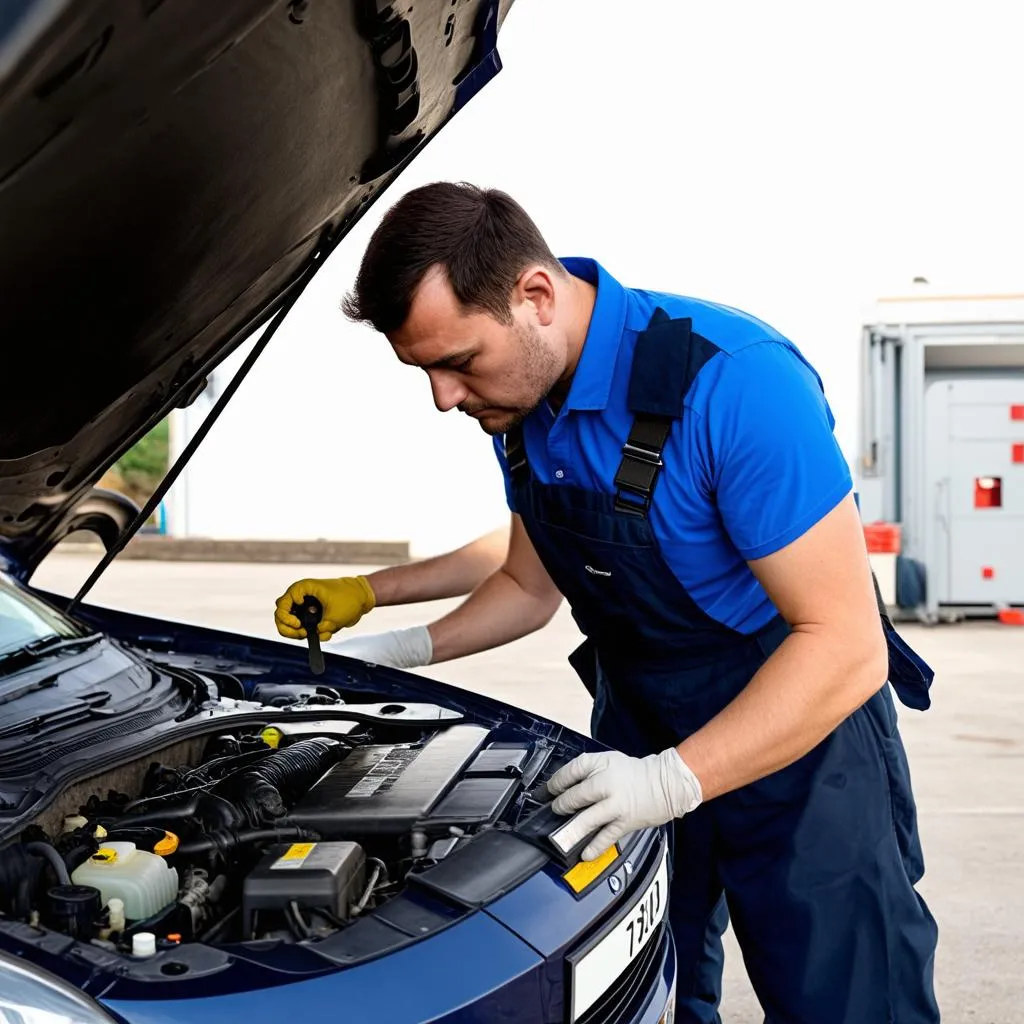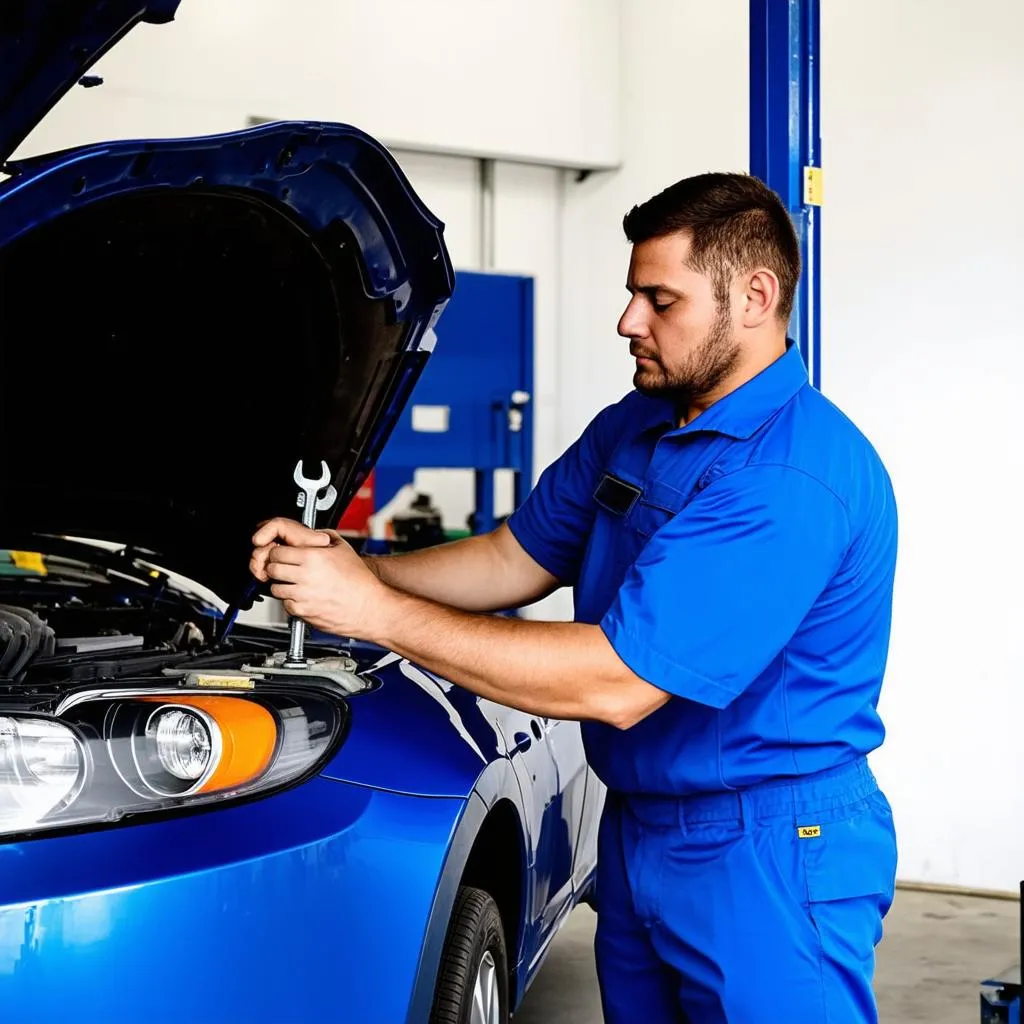Have you ever been cruising down the road in your trusty 04 Chevy Classic 2.2, only to be met by that dreaded check engine light? And then, after nervously hooking up your OBD-II scanner, you’re greeted by the cryptic message “P0455”? Don’t worry, you’re not alone! This code is surprisingly common and can feel like a real head-scratcher. But fear not, fellow Chevy owner, this article is here to break down the P0455 code, explain its potential causes, and guide you towards getting your Classic back on the road in tip-top shape.
What Does P0455 Really Mean (and Why Should I Care)?
In simple terms, the P0455 code indicates a leak in your Evaporative Emission Control (EVAP) system. “EVAP, what’s that?” you might ask. Well, it’s a vital part of your car’s emission control system. Think of it as a mini-recycling center for fuel vapors. Instead of letting those harmful fumes escape into the atmosphere, the EVAP system captures them and sends them to the engine to be burned.
“Okay,” you say, “but why should I care about a little leak?” Well, a malfunctioning EVAP system can lead to:
- Increased emissions: Harming the environment is never a good thing.
- Poor fuel economy: A leaky system can disrupt your car’s air-fuel mixture, making it thirstier.
- That pesky check engine light: No one likes a constant reminder that something is wrong.
- Failed emissions tests: This can be a real headache come inspection time.
Unmasking the Culprits: Common Causes of the P0455 Code
While a P0455 code might seem daunting, the good news is that the culprits behind this code are often easily identifiable and fixable. Here are some usual suspects:
- Loose or Damaged Gas Cap: This is one of the most frequent (and easiest to fix!) causes. A loose or faulty gas cap can disrupt the EVAP system’s pressure, triggering the code.
- Faulty Vent Solenoid: This little component regulates the flow of vapors within the EVAP system. A malfunctioning solenoid can cause leaks and disrupt the system’s operation.
- Leaky EVAP Lines or Hoses: Over time, the hoses and lines within the EVAP system can crack, deteriorate, or become disconnected, leading to leaks.
- Purge or Vent Valve Issues: These valves control the flow of vapors into the engine for combustion. If they get stuck open or closed, it can trigger the P0455 code.
- Faulty Charcoal Canister: This component stores fuel vapors before they are purged into the engine. A damaged or clogged canister can disrupt the entire EVAP system.
Tackling the P0455 Code Head-On: Diagnosis and Repair
Now that we know the common culprits, let’s explore how to get to the bottom of the problem:
- Start Simple: Check that gas cap! Make sure it’s tightly secured. You’d be surprised how often this simple step resolves the issue.
- Visual Inspection: Carefully examine the EVAP system components, including hoses, lines, and connections, for any visible signs of damage, cracks, or disconnections.
- Diagnostic Tools: If a visual inspection doesn’t reveal the culprit, it’s time to employ a diagnostic tool, like an advanced OBD-II scanner. This can pinpoint the problem area by reading specific data from your car’s computer.
- Professional Help: While many EVAP system repairs are straightforward, some might require specialized tools or knowledge. If you’re unsure, don’t hesitate to seek assistance from a qualified mechanic.
Beyond the Technical: The P0455 Code and Your Peace of Mind
While a P0455 code might be a nuisance, remember, it’s your car’s way of telling you something needs attention. Addressing this issue promptly not only ensures your car runs smoothly and efficiently but also contributes to a healthier environment.
 Car mechanic checking under the hood
Car mechanic checking under the hood
FAQs about the P0455 Code
Here are answers to some common questions about the dreaded P0455:
- Can I still drive my car with a P0455 code? While you might not experience immediate drivability problems, it’s best to address the issue as soon as possible to avoid potential complications.
- How much does it cost to fix a P0455 code? The cost varies depending on the underlying cause. A simple gas cap replacement might cost under $20, while more complex repairs could range from $100 to $500 or more.
- Can I fix the P0455 code myself? If you’re mechanically inclined, some repairs, like replacing a gas cap or hose, can be done at home. However, more complex issues might require professional expertise.
 Mechanic working on car in auto repair shop
Mechanic working on car in auto repair shop
Need More Help? We’re Here for You!
Dealing with car troubles can be frustrating, but remember, you don’t have to face them alone. If you need assistance diagnosing or resolving your P0455 code, our team of automotive experts is just a message away.
Contact us on WhatsApp at +84767531508 for 24/7 support with diagnostic tools and expert advice.
We’re here to help you get your Chevy Classic back on the road and running smoothly.